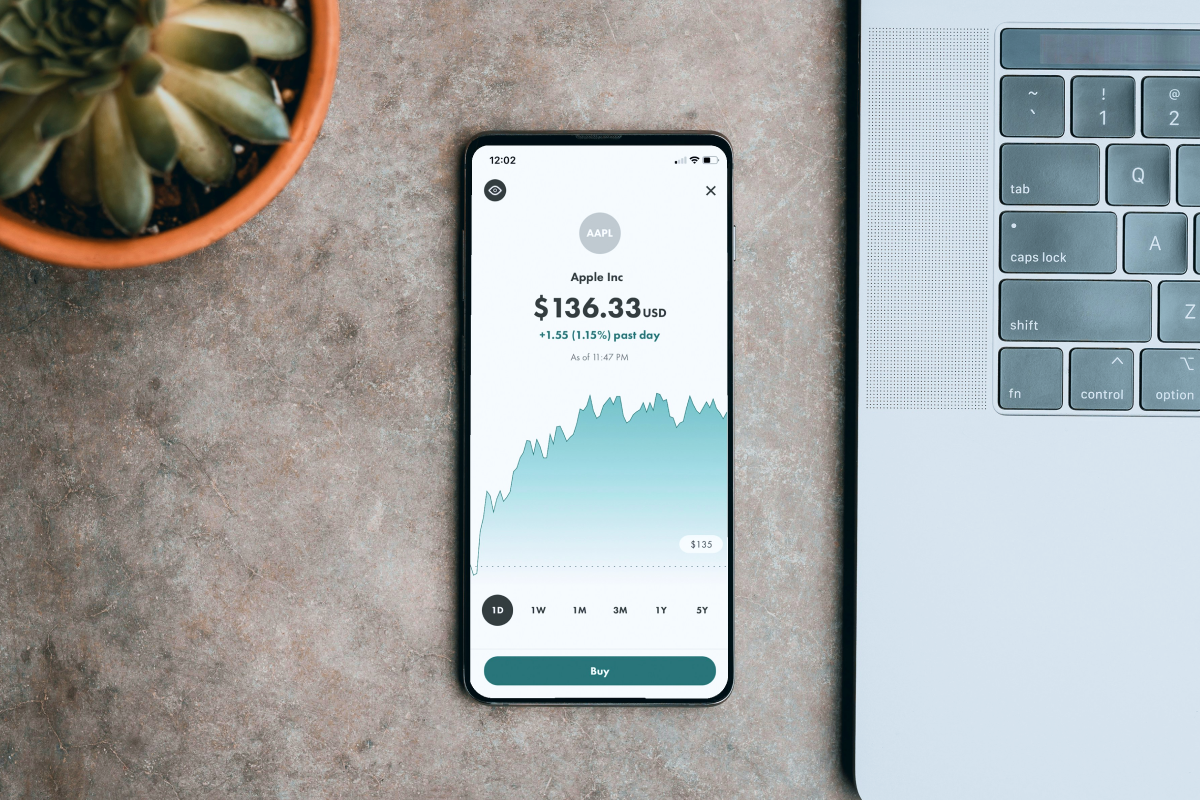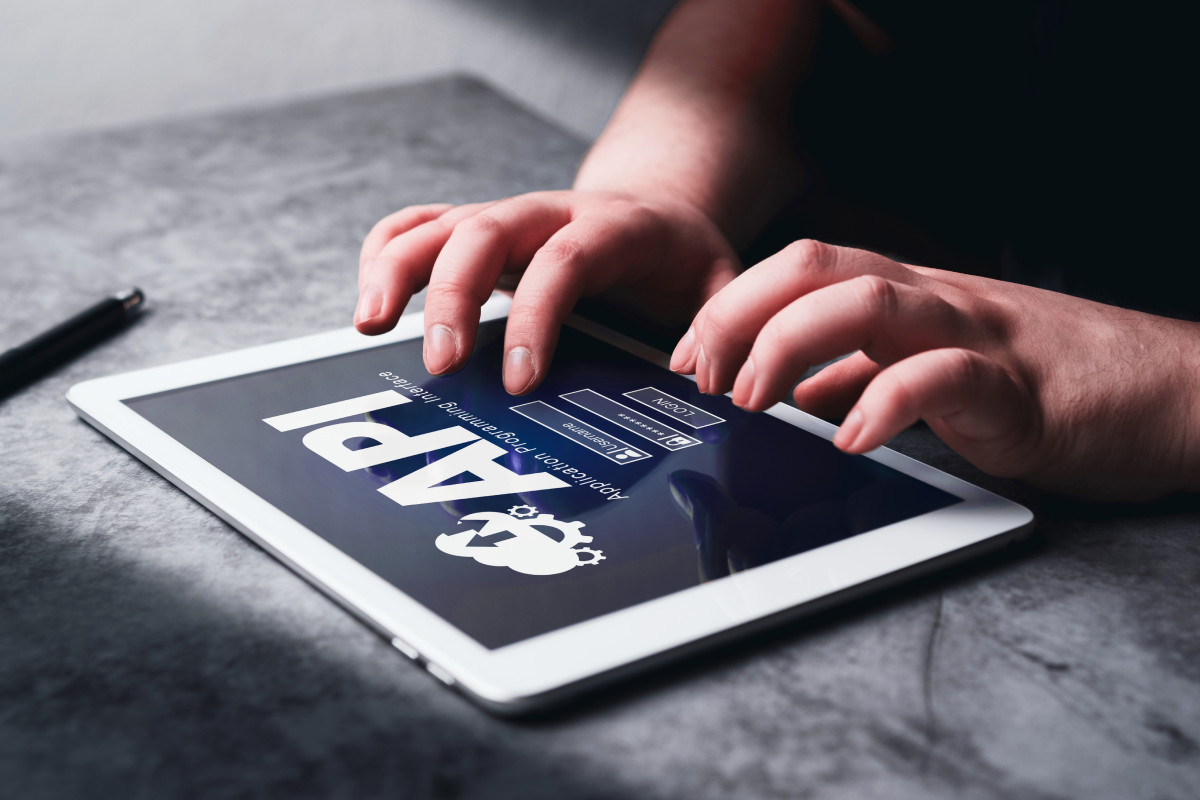Do we even have to talk about the stress level when you start a fintech startup and need to build a product that fits the market, satisfies users' needs, and wins among other fintech products? Not really. However, we need to determine the approach to help you achieve everything mentioned above. And remain sane.
In today's article, we'll talk specifically about digital wallets, also known as e-wallets. I'll explain how to create a digital wallet in steps. More importantly, I'll give you handy tips on securing your digital wallet and overcoming the most common development challenges.
I’m Yan Likarenko, Product Manager at Uptech. We’ve been working with clients from the fintech domain since 2016. Such fintech products as Aspiration and Cardless are in our portfolio, so I must assure you that this article is based on real-life cases and experience.
Let’s get started!
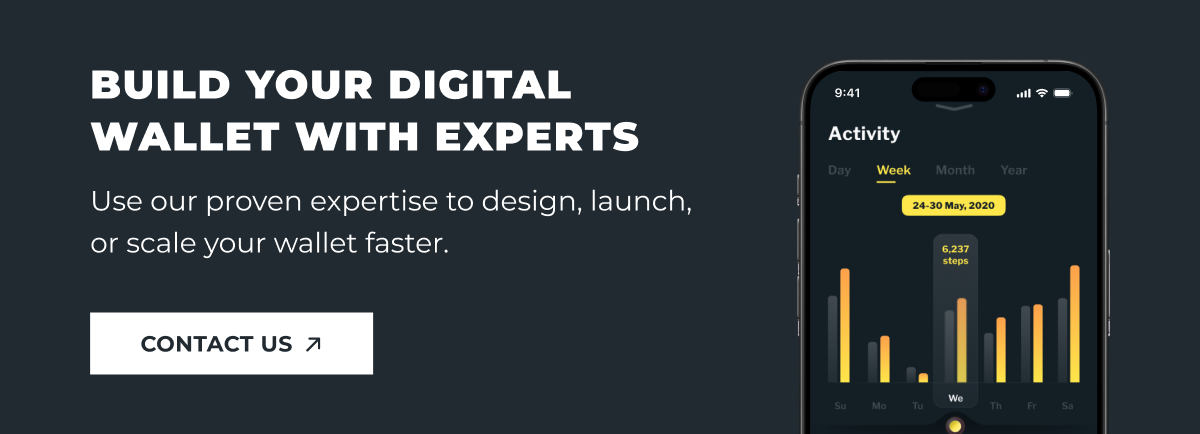
Digital Wallets: Where We Are Now and Where We’re Headed
The conversation around digital wallets often jumps straight to market size or technology trends. But first, it’s worth grounding ourselves in a clear definition of what a digital wallet is and the role it plays today.
What is a digital wallet?
Let's make sure that we're on the same page and review the fundamentals. Digital wallets, also known as e-wallets, are mobile applications that allow users to store digital versions of their credit cards, debit cards, and other payment methods, enabling them to make purchases quickly and easily online or in-store.
Digital wallets stats
According to a report by Grand View Research, the global digital payment market was estimated at USD 114.41 billion in 2024 and is projected to reach USD 361.30 billion by 2030, growing at a CAGR of 21.4% from 2025 to 2030. This rapid expansion is driven by the increasing adoption of smartphones and the growing demand for secure, contactless payment options in everyday transactions.
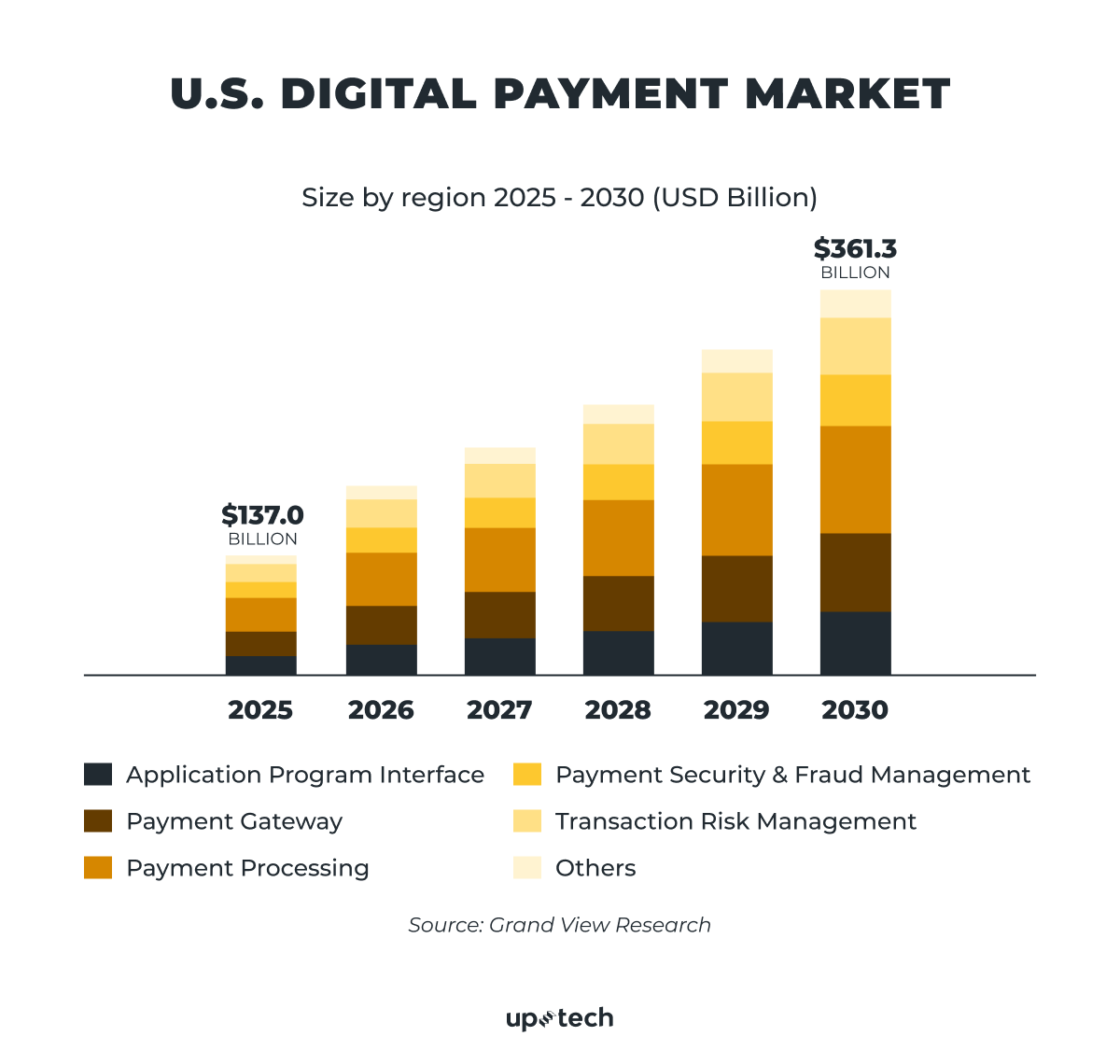
So, what can we expect from digital wallets over the next 5 years?
The digital wallet market will continue to grow at a rapid pace. The increasing use of mobile devices for financial transactions and the emergence of new technologies such as blockchain, biometrics, and AI are expected to push the adoption of digital wallets further and make them even more appealing to consumers.
- Blockchain is already reshaping cross-border payments, making them faster and cheaper, while also supporting secure digital IDs.
- Biometrics, from fingerprints and face scans to voice recognition, are replacing passwords and PINs, reducing friction and helping to curb fraud.
- AI is turning wallets into smarter companions, analyzing spending patterns, sending timely alerts, and even suggesting ways to save or invest.
Together, these innovations point to a future where a digital wallet is less an app and more a central hub for money, identity, and essential services. For users, that means fewer steps and more trust. For businesses, it’s an opportunity to build lasting loyalty well beyond the checkout.
Why To Create a Digital Wallet: Benefits For Your Business
Setting up a digital wallet appears to be a promising niche, but before developing one, you should answer the question, "Why?" Below, I have gathered several benefits that a founder can gain by creating a digital wallet.
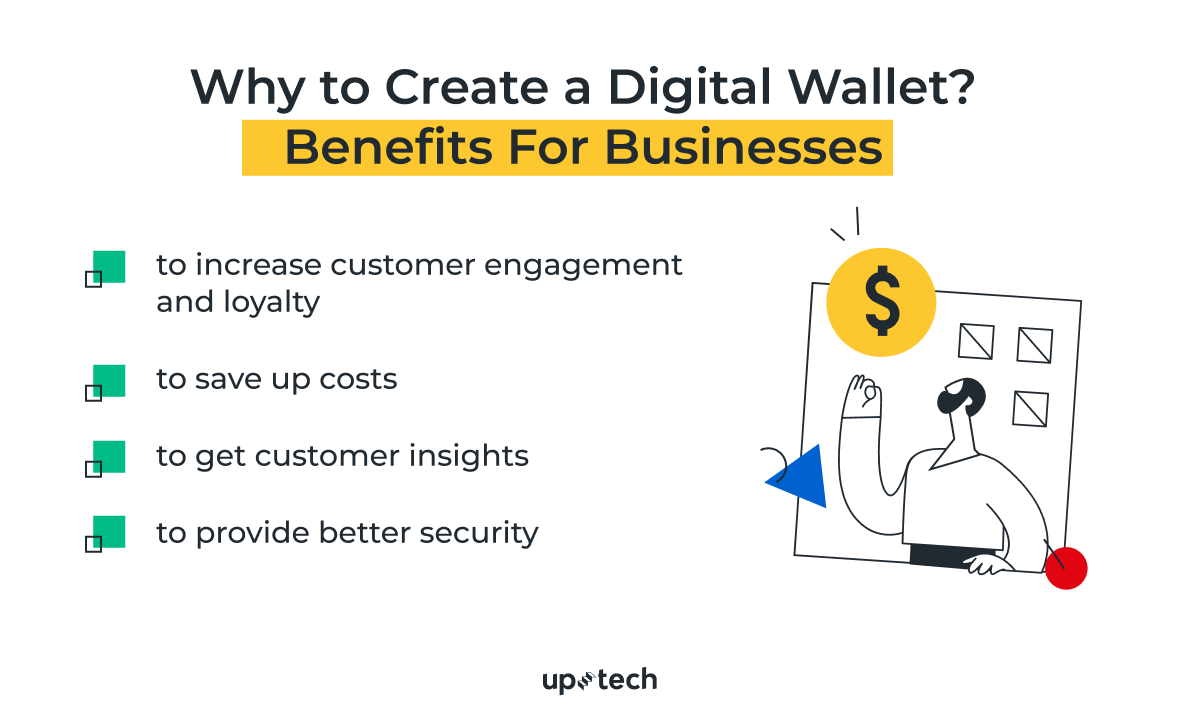
Increased customer engagement and loyalty
Digital wallets make it easy for users to make payments and transactions instantly, from virtually anywhere and on any device. This convenience not only encourages repeat usage but also helps businesses reach digital-first consumers who expect fast, contactless, and secure payment options. Beyond payments, wallets can integrate loyalty programs, personalized offers, and rewards, making them a natural touchpoint for ongoing interaction.
Saved costs
Digital wallets can reduce transaction costs for businesses, as they eliminate the need for physical cash and reduce reliance on traditional payment methods, such as credit card processing. Additionally, digital wallets can streamline accounting and financial reporting processes, as transactions are logged digitally and in real-time. This minimizes manual paperwork, cash-handling overhead, and errors in reconciliation, cutting administrative costs.
Data insights
Digital wallets provide businesses with valuable data — and in today’s market, data is currency. You get insights into customer spending habits, preferences, and behavior. Beyond basic transaction records, wallets can reveal purchase frequency, average order value, peak usage times, and even response to promotions. This data can help improve your business's marketing strategies, create loyalty programs, and make more personalized offers that resonate with customers. Over time, these insights strengthen customer relationships and guide smarter product or pricing decisions.
Higher security
Digital wallets can offer enhanced security features, such as encryption and two-factor authentication, which can protect users' sensitive financial information from theft and fraud. Many wallets also integrate biometric authentication, such as fingerprints, face scans, or voice recognition, which adds an extra layer of protection without sacrificing convenience.
In addition, tokenization technology makes sure that actual card details are never shared during transactions and reduces the risk of data breaches. For businesses, these safeguards reduce fraud-related losses and foster trust with customers, which is crucial in financial services.
Main Steps to Create a Digital Wallet
So, we have approached the most interesting part of this article. Let me guide you through the process of digital wallet project creation.
Below, I described the steps and approaches we use at Uptech to develop products. If you have any questions regarding them or need a consultation about your digital wallet project, feel free to reach out to our team. We'll be happy to help you.

Step 1: Define your goals and features
The first step in creating a digital wallet is to clearly define your goals and features.
- What problem will your wallet solve, and what value will it bring to users?
- Who is the target audience?
- Which features are essential at launch, and which can wait for later updates?
For example, will your wallet allow users to store multiple currencies, make payments to merchants, transfer money peer-to-peer, or integrate with loyalty and rewards programs?
It's important to clearly understand your goals and features before moving on to the next step. This will help you determine the technologies, compliance requirements, and resources needed to build your digital wallet.
Without this clarity, projects often face scope creep, wasted budgets, and features that look impressive on paper but fail to solve user problems. Clear definitions at the start give the project focus, shorten time to market, and increase the chances of building something customers will actually adopt.
Uptech tip: Product discovery is the stage of product development that comes in handy here. Running discovery early helps avoid costly pivots, speed up time to market, and build further advancements with confidence.
At Uptech, we work with clients during this stage to validate ideas, prioritize the right feature set, and make sure the product matches market demand.
Step 2: Choose a platform and technology
The next step is to choose a platform and technology for your digital wallet. There are several options available, including native apps for iOS and Android, cross-platform frameworks, or web-based solutions. You’ll also need to decide on a programming language or framework, such as Java/Kotlin for Android, Swift for iOS, or cross-platform options like React Native or Flutter.
When selecting your platform and technology, it’s important to consider your target audience and the devices they use. For example, if your target audience primarily uses iOS devices, it makes sense to develop your digital wallet as an iOS app.
If you didn't take the product discovery stage seriously, this is a good example of how skipping it can lead to a product with poor market fit, wasted development time, and significant cost overruns.
Uptech tip: When choosing a tech stack, start by mapping your must-have features against the platforms your audience actually uses. Think about scalability, compliance, and long-term maintenance — not just the speed of launch. Founders who skip this step often lock themselves into tools that can’t grow with their product.
At Uptech, we offer tech stack audits where our Solution Architect analyzes your business needs and selects the best tools. We make sure to build a scalable and secure app. Reach out and let us know how we can assist you.
Step 3: Create a user interface
Once you've selected your platform and technology, it's time to create a user interface (UI) for your digital wallet. The UI is the front-end of your digital wallet and is what users will interact with.
Consider that 52% of users think a poor mobile experience causes them to lose trust in an app. This is why it's so important to hire a professional UX/UI designer.
Your UI should be intuitive and easy to use. It should allow users to quickly access their account information, make payments, and transfer funds. Consider using a minimalist design with clear, easy-to-understand icons and buttons.
Check out the examples of UI concepts for fintech apps we create:


Step 4: Integrate payment gateways
The next step is to integrate payment gateways into your digital wallet. A payment gateway is the service that securely processes transactions, allowing users to make payments using their credit card, debit card, or bank account.
There are several payment gateways available, including:
- PayPal
- Stripe
- Braintree.
It's important to choose a payment gateway that is secure and reliable, as users will be entrusting their financial information to your digital wallet. Look for providers that meet strict security standards (PCI DSS compliance), support multiple currencies if you plan to go global, and offer reliable uptime and fraud protection.
Check out our article on how to create a website with payment gateways for a deeper dive into gateway options and setup.
Step 5: Implement security measures
Security is a top priority for fintech apps, and digital wallets aren’t an exception. To protect user data and prevent fraud, you’ll need measures like 2FA, biometric logins, encryption, tokenization, and real-time fraud monitoring. We’ll dive deeper into these practices further in the article.
There are more ways to secure your fintech apps. We have described 7 the seven most common in our fintech security guide. Check it out!
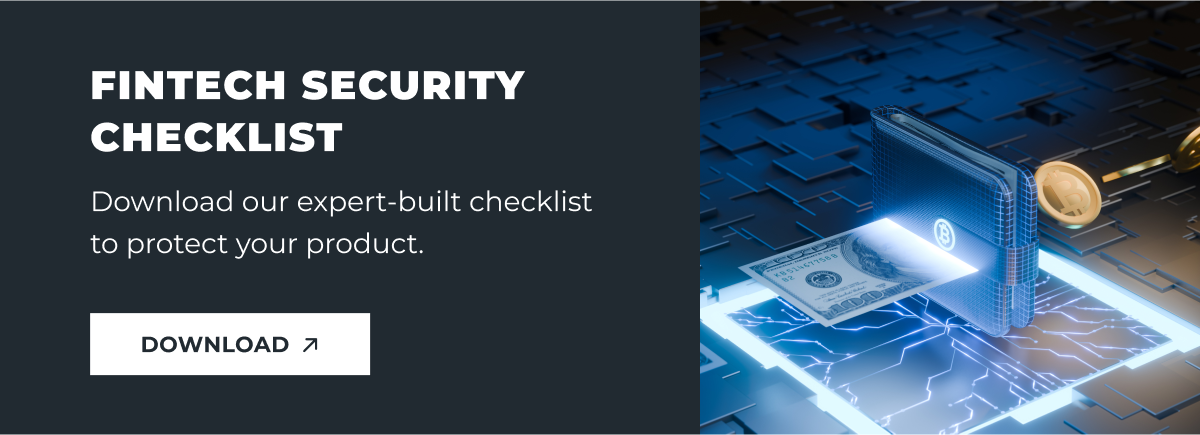
Step 6: Test and launch your digital wallet
Before launching your digital wallet, it’s important to thoroughly test it to ensure that it functions properly and delivers a smooth user experience. Testing should cover security vulnerabilities, usability, performance under load, and edge cases (like failed transactions or weak network connections).
Once testing is complete, you’re ready to launch — but every founder knows this is where the real work begins. In the first weeks, you’ll need to monitor stability closely, fix bugs quickly, and respond to crashes or user complaints. When things calm down, the focus shifts to ongoing maintenance: gathering feedback, releasing updates, and improving features with each new version.
Uptech tip: Launching a startup is hard. But if you did a quality job during the development, conducted in-depth discovery, created a stable app infrastructure, and tested the app, there will be fewer headaches after launch. This preparation not only saves firefighting later but also frees you to focus on scaling and growing your product.
You can trust the development part to our team of professional developers. Since 2016, we’ve been building fintech apps and know the ins and outs of this industry. Check out our fintech software development services to see how we can help.
How to Set Up a Secure Digital Wallet
I can't stress enough the importance of security in fintech app development, and as we at Uptech prioritize security, here are 10 practical development tips to make a digital wallet secure:

Implement multi-factor authentication
MFA requires the user to provide two or more forms of authentication, such as a password and a biometric identifier, like a fingerprint, to access their account.
Use end-to-end encryption
End-to-end encryption ensures that the data transmitted between the user and the wallet is secure and cannot be intercepted by a third party.
Store sensitive information securely
Sensitive information like user credentials and private keys should be encrypted and stored on secure servers with restricted access.
Use password protection
Provide one-time codes or PINs that users should enter at various stages of working with a digital wallet.
Use point-to-point encryption (P2PE)
It ensures end-to-end protection and encrypts the whole transaction when an owner swipes the phone over a PoS terminal.
Implement tokenization
A token is a combination of symbols that don't contain financial information and are useless for fraudsters. It allows the app to secure e-wallet payments using data encryption and stores users' data on the cloud.
Use account blocking
The system can black the wallet when there's suspicious behavior with the user's wallet. Users should also be able to block their wallet themselves via a call, message, or in-app feature.
Conduct regular security audits
Regular security audits can help identify potential vulnerabilities and allow developers to address them before they become a problem.
Use a firewall
Firewalls can help prevent unauthorized access to the wallet, protect against malware and viruses, and block suspicious network traffic.
Implement transaction limits
Set transaction limits to prevent users from transferring too much money at once or too frequently. It will help limit the damage caused by a security breach.
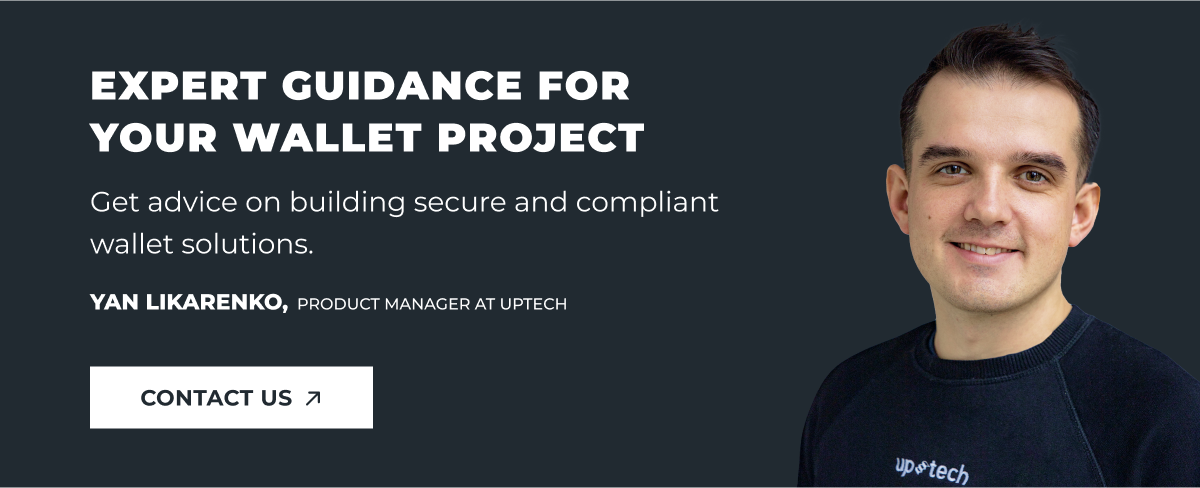
3 Main Challenges of Developing a Digital Wallet
Digital wallets may look simple on the surface — a sleek app where users tap, scan, and pay in seconds. But behind that smooth experience lies a complex system of financial regulations, security protocols, and technical architecture. For businesses, building a wallet means overcoming hurdles that go far beyond just coding an app. Here are the three biggest challenges every company should be prepared for.
Different compliance regulations
Money and finance are strictly regulated by the central bank. Nowadays, most digital payment apps must comply with AML, GLBA, and JOBS Act in the US, and GDPR and PSD2 SCA in Europe — all of which tie directly into ensuring strong payment security.
The tricky thing is that the legal regulations vary from country to country, sometimes even from state to state. It's important to get familiar with the current norms and regulations in your target country and choose a fintech app development partner with previous experience in the fintech domain.
Fraud detection and risk mitigation
Fraud is a big problem in digital wallet app development, and it's important to take steps to prevent it. Many people who are not familiar with eWallets are easily fooled, and digital wallet payment risk is associated with data theft, data leaks, malware attacks, hacking, and more. This risk is one of the main reasons why some people avoid using eWallets or abandon them. However, with advanced technologies and security hacks, developers can now mitigate the most common app vulnerabilities and risks.
Technological hurdles
Let's keep it clear: setting up a digital wallet app is a complex task and requires much expertise. To ensure your project's success, it's essential to hire an experienced app development company with expertise in creating secure, fast, user-friendly, and scalable apps. Companies like Uptech can guide you in creating an effective app that meets your business' and users' needs.
Conclusion
Leveraging Uptech expertise and 9 years of experience in app development can really help. It is a smart move to take some time to find a reliable development partner. It can save you time and money to trust the part of digital wallet development to an outsourcing team with a lot of experience.
So we will be here when you need some guidelines for developing your product. If you're looking for extra hands now, contact our team.



























































